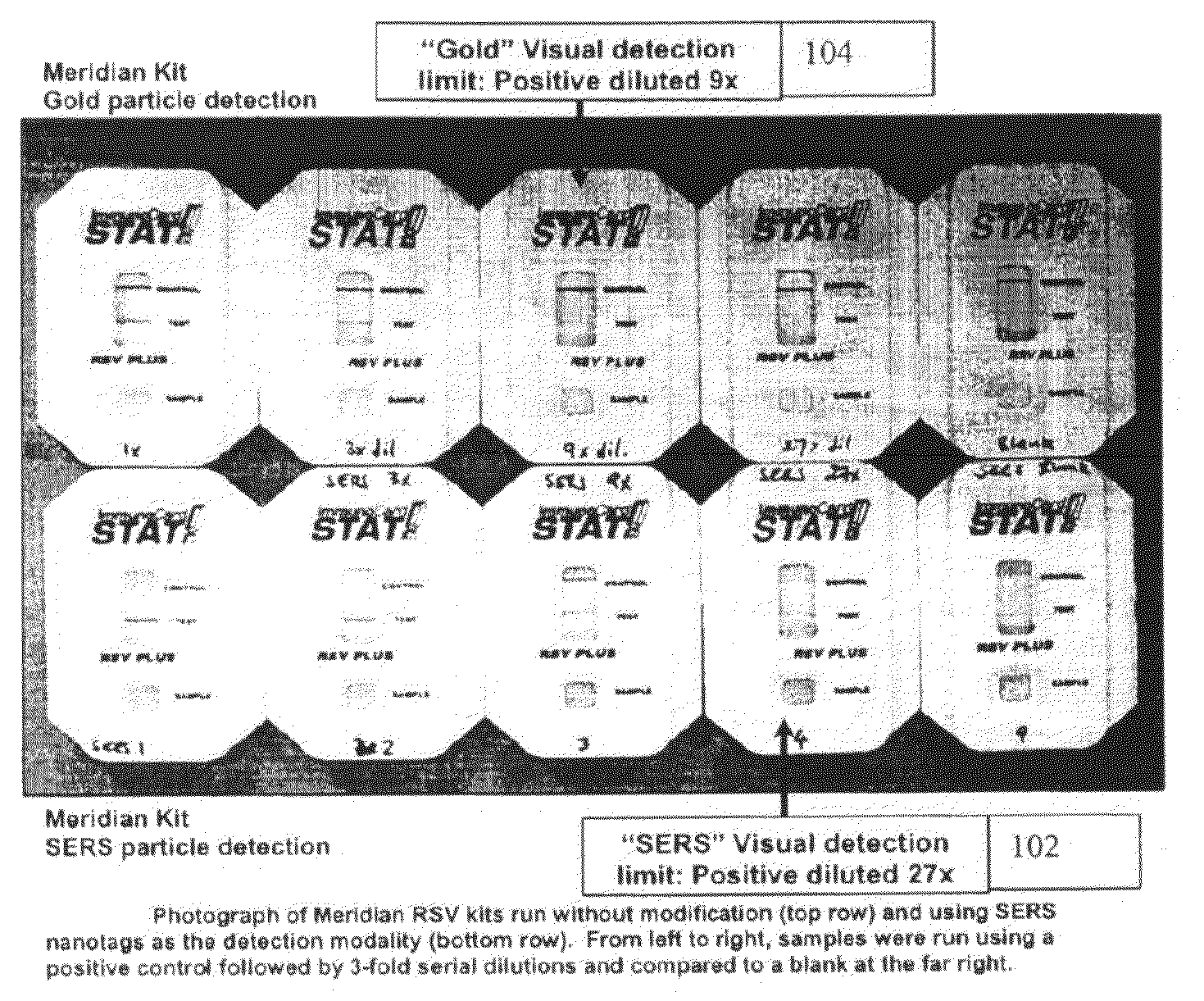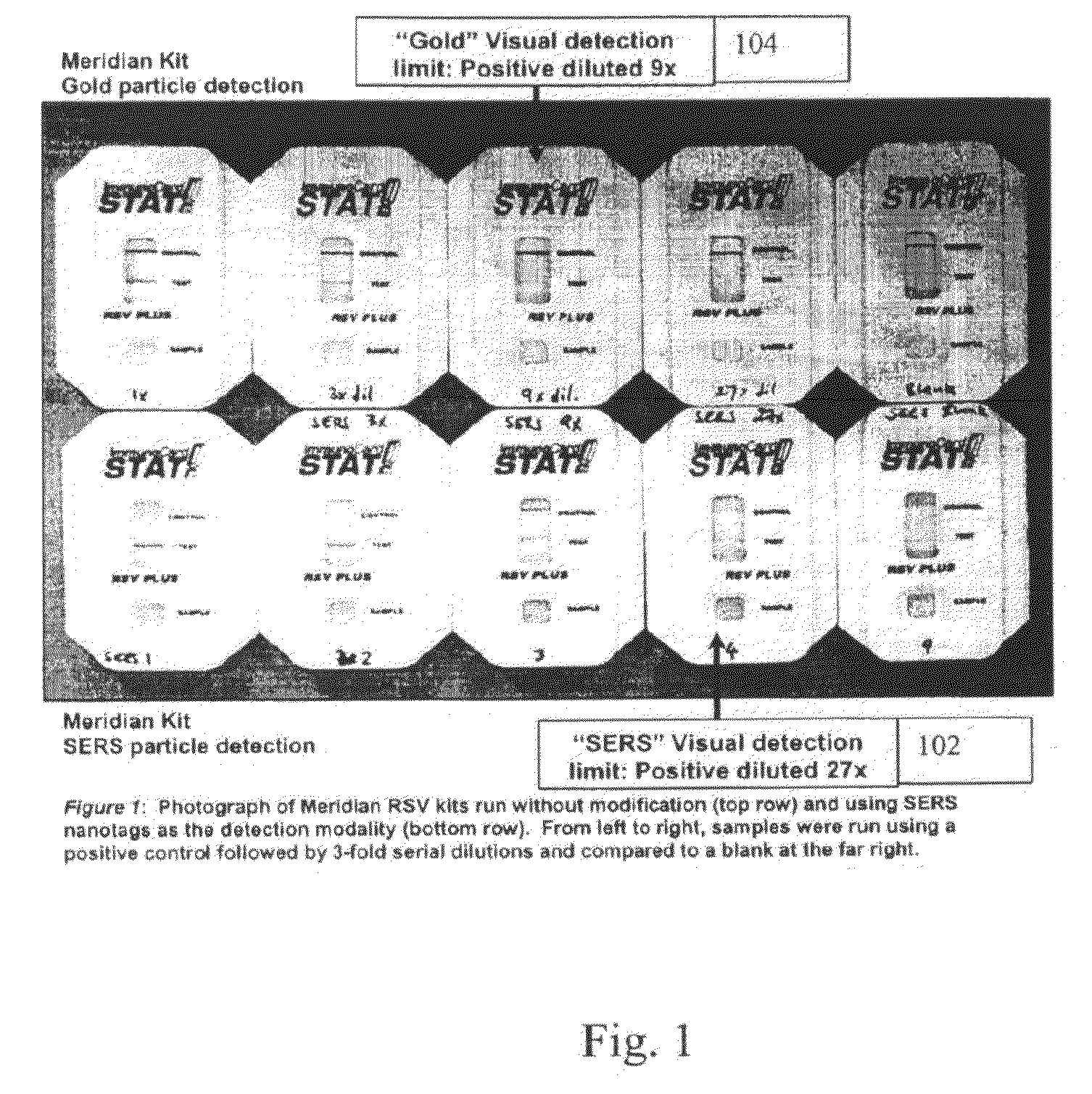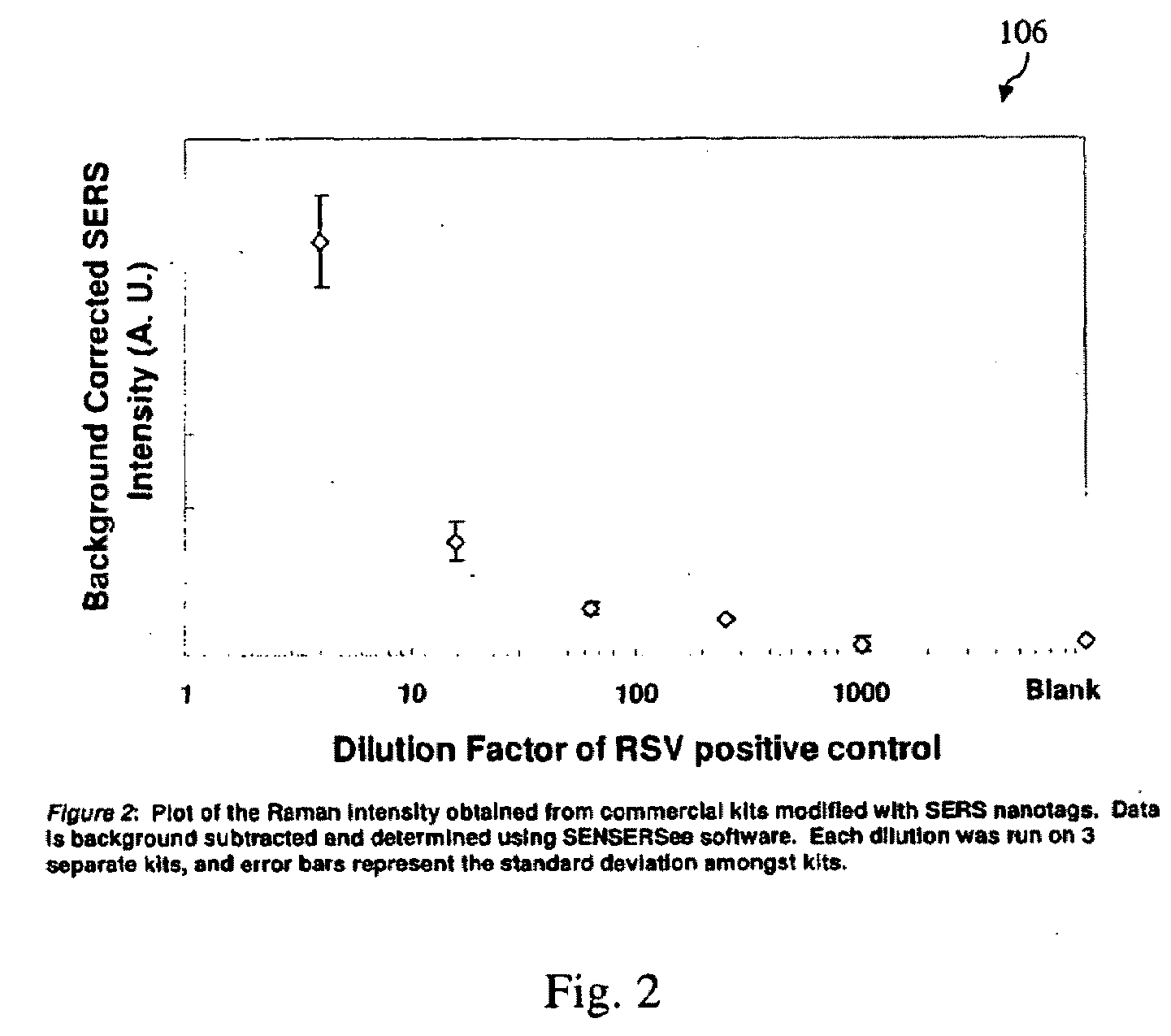Lateral Flow Immunoassay With Encapsulated Detection Modality
a technology of immunoassay and encapsulation, which is applied in the field of system and method for performing lateral flow immunoassay (lfi), can solve the problems of difficult or impossible to obtain qualitative analysis or quantitative results difficult or impossible to obtain high sensitivity, qualitative analysis or quantitative results are difficult or impossible to obtain with typical prior art lfi devices, and the visual detection of particles bound to test lines can be obscured by blood, soil or other contaminants
- Summary
- Abstract
- Description
- Claims
- Application Information
AI Technical Summary
Benefits of technology
Problems solved by technology
Method used
Image
Examples
example 1
[0049]Commercial lateral flow immunoassay (LFI) kits for respiratory syncytial virus (RSV) were obtained and modified to use SERS nanotags to detect the presence of RSV antigen. In addition, a number of kits were used as received in order to determine the sensitivity of the commercial product. To use SERS nanotags with the device, the conjugate pad within the kit was removed prior to use. In a typical experiment, a positive control was diluted with sample diluent from the kit (160 μl total volume) and mixed with SERS nanotags (15 μl of OD˜5) that had been conjugated to an RSV detection antibody. After about 2 minutes, this mixture was added to the kit. The test was run at room temperature for about 15 min before visual reading and collection of the Raman spectra.
[0050]By visual detection alone, the sensitivity of the commercial tests versus the SERS nanotag-modified tests is shown in FIG. 1. The visual detection limit with SERS nanotags is as good or better than the commercial kit: ...
example 2
Singleplex Experiments:
[0054]As a preliminary step toward development of a multiplexed LFI test for RSV, Influenza A and Influenza B, a series of single-plex tests for each antigen were first developed. For each test, a pair of antibodies was purchased. Each antibody was conjugated to SERS nanotags of a selected “flavor” and tested on LFI strips as liquid conjugates, rather than dried conjugate pads, to determine the best combination of capture antibody on the nitrocellulose strip and detection antibody conjugated to the SERS nanotags. Once the best pair was found, the appropriate SERS nanotags were dried onto conjugate pads and assembled into complete tests.
[0055]These tests were run using standards obtained for RSV, Influenza A and Influenza B. For RSV, the positive control (unknown concentration) was run without dilution and at various dilutions using a commercial LFI running buffer. The Influenza A and B antigens were of known concentration and were also diluted in the running b...
example 3
Multiplex Experiments:
[0057]Once the appropriate conditions had been determined for the singleplex tests, the first attempt at a multiplexed LFI was essentially just a combination of all parts into one test. The 3-plex used the same d8-DPy-RSV conjugate as used for the singleplex test, but new conjugates had to be made for Flu A (DPy) and Flu B (BPE). All conjugates were mixed for deposition into conjugate pads. Likewise, all three capture antibodies were striped into a single line on the nitrocellulose cards. After assembly of the strips into cartridges, each antigen was tested using a similar concentration range. Only one antigen was used at a time for preliminary testing. However, data was analyzed against the presence of background nitrocellulose and all 3 flavors of tags. Also, the detection / interrogation instrument was modified with a dedicated cartridge holder. Thus, samples were inserted into the holder and spectra acquired without any manipulation to assure that the test li...
PUM
 Login to View More
Login to View More Abstract
Description
Claims
Application Information
 Login to View More
Login to View More - R&D
- Intellectual Property
- Life Sciences
- Materials
- Tech Scout
- Unparalleled Data Quality
- Higher Quality Content
- 60% Fewer Hallucinations
Browse by: Latest US Patents, China's latest patents, Technical Efficacy Thesaurus, Application Domain, Technology Topic, Popular Technical Reports.
© 2025 PatSnap. All rights reserved.Legal|Privacy policy|Modern Slavery Act Transparency Statement|Sitemap|About US| Contact US: help@patsnap.com



